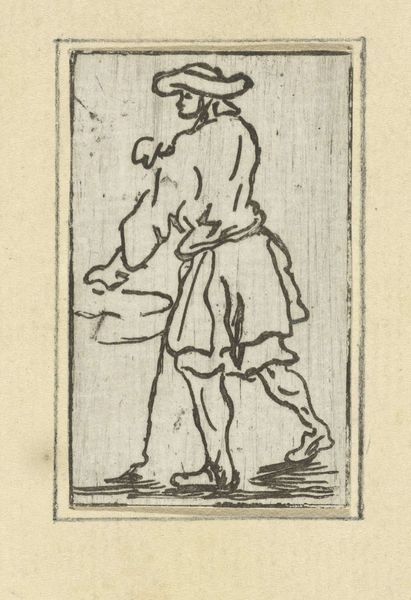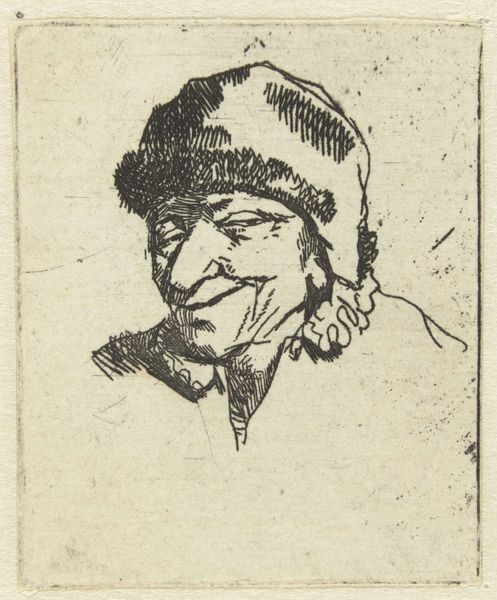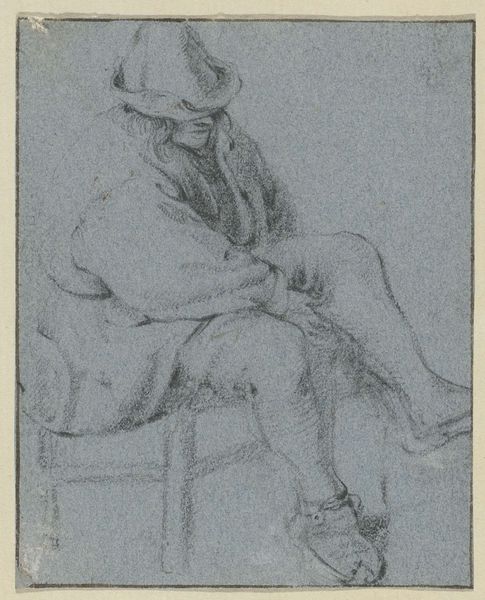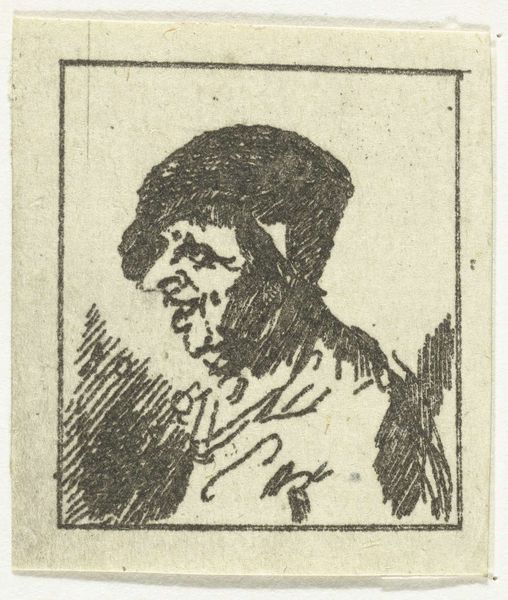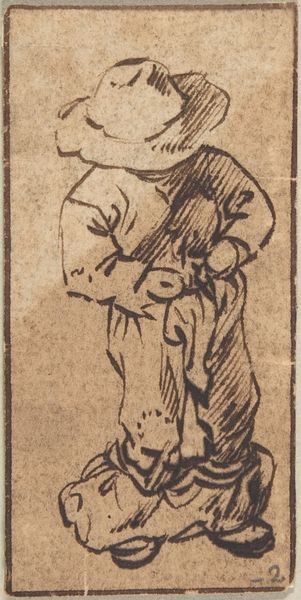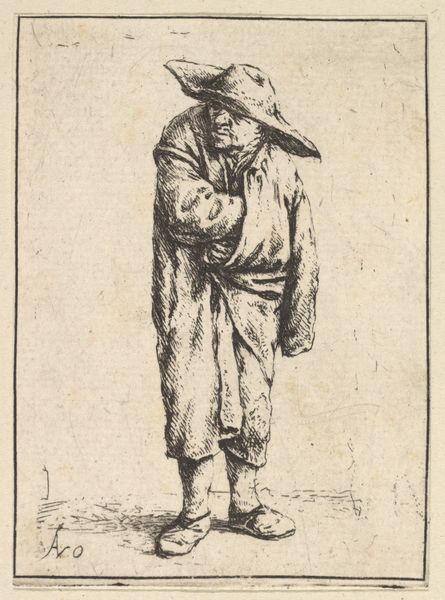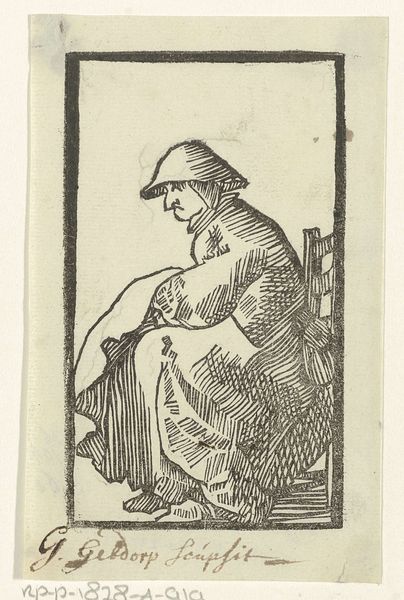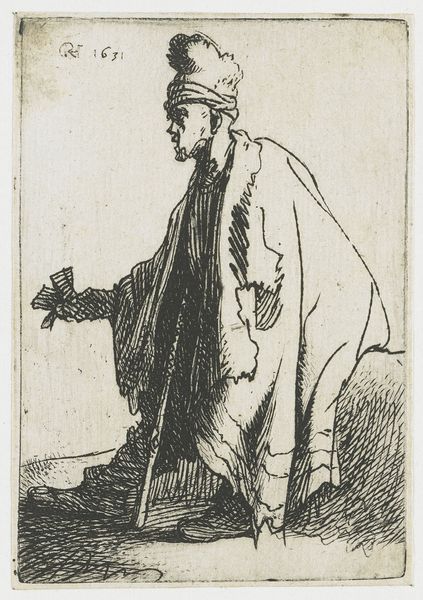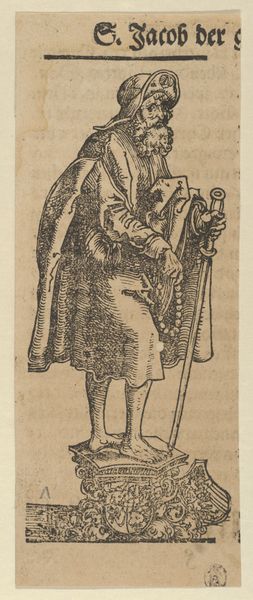
drawing, pen
#
portrait
#
drawing
#
comic strip sketch
#
toned paper
#
light pencil work
#
baroque
#
sketch book
#
personal sketchbook
#
sketchwork
#
pen-ink sketch
#
sketchbook drawing
#
pen
#
storyboard and sketchbook work
#
sketchbook art
Dimensions: height 63 mm, width 48 mm
Copyright: Rijks Museum: Open Domain
Curator: Immediately, I am struck by the texture and tonal range achieved in this drawing. The hatching! Editor: And it is indeed a very tactile piece; we're looking at "Man op zijn elleboog leunend," which translates to "Man Leaning on his Elbow." It’s attributed to Jacob Hoolaart and estimated to be made between 1728 and 1789. Crafted with pen on toned paper, it provides an intimate glimpse into 18th-century artistry and its labor processes. Curator: Toned paper already gives it so much depth, right? Observe how Hoolaart utilizes the light to define the contours of the figure. His hat especially, shows an amazing composition using different lines that invite the viewer’s eye into it. The figure has this quiet presence and an excellent range of tones. Editor: Indeed, you're noticing how the paper itself becomes a key element. How Hoolaart used readily available, perhaps even inexpensive materials, would be telling, and then to elevate this sketch into the realm of art raises questions of production in the artist's practice. Where did the paper come from? What was its purpose prior to the sketch? Curator: Perhaps from his own sketch book? To consider his artistic intentions alongside those of the academy, he almost appears as if to break from his time, creating something outside of his usual practice. He also breaks the idea of the artist in service to a noble family, depicting every day characters! Editor: Yes, he seems focused on form rather than idealization! So tell me more about how you think it defies convention through materiality? Curator: In Hoolaart's skillful use of hatching, it shows a keen understanding of how line and density create depth and volume, transforming simple lines into a captivating, three-dimensional presence. How it becomes a striking study in contrasts and tonal graduations, and demonstrates the power of focused formal choices. Editor: By looking at Hoolaart's technical skill, we are gaining a unique lens onto 18th-century Holland, in which art wasn’t solely defined by grand portraits. He and other contemporary artists, helped give space to more humble aspects of life, that should be acknowledged in our understanding of art history. Curator: Absolutely, and perhaps, a glimpse of everyday people is how Hoolaart intended it.
Comments
No comments
Be the first to comment and join the conversation on the ultimate creative platform.


